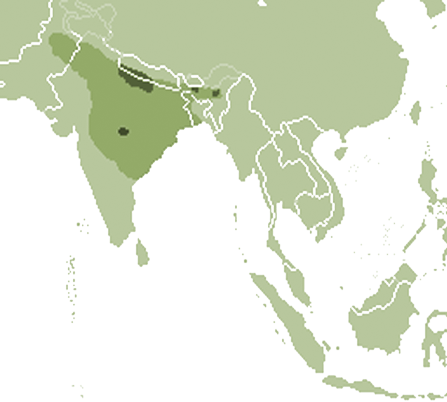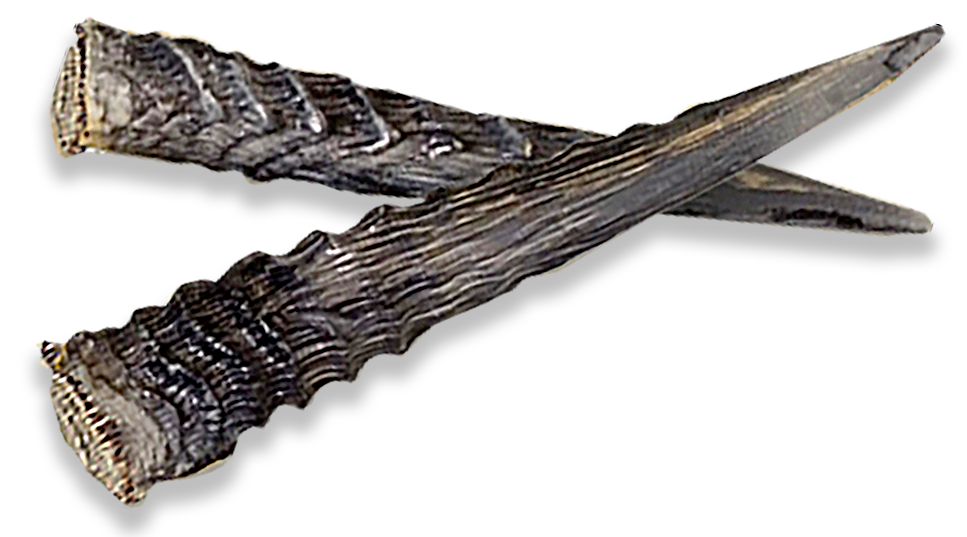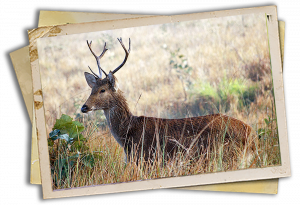
Range
India
India
Barasingha
Rucervus duvaucelii
The barasingha (Rucervus duvaucelii), also called swamp deer, is a deer species distributed in the Indian subcontinent. Populations in northern and central India are fragmented, and two isolated populations occur in southwestern Nepal. It is extinct in Pakistan and Bangladesh. The specific name commemorates the French naturalist Alfred Duvaucel.
The barasingha is a large deer with a shoulder height of 44 to 46 in and a head-to-body length of nearly 6 ft (180 cm). Its hair is rather woolly and yellowish brown above but paler below, with white spots along the spine. The throat, belly, inside of the thighs and beneath the tail is white. In summer the coat becomes bright rufous-brown. The neck is maned. Females are paler than males. Young are spotted. Average antlers measure 30 in (76 cm) round the curve with a girth of 5 in (13 cm) at mid beam. A record antler measured 104.1 cm (41.0 in) round the curve. Stags weigh 170 to 280 kg (370 to 620 lb). Females are less heavy, weighing about 130 to 145 kg (287 to 320 lb). Large stags have weighed from 460 to 570 lb (210 to 260 kg).


Rudyard Kipling in The Second Jungle Book featured a barasingha in the chapter “The Miracle of Purun Bhagat” by the name of “barasingh”. It befriends Purun Bhagat because the man rubs the stag’s velvet off his horns.



